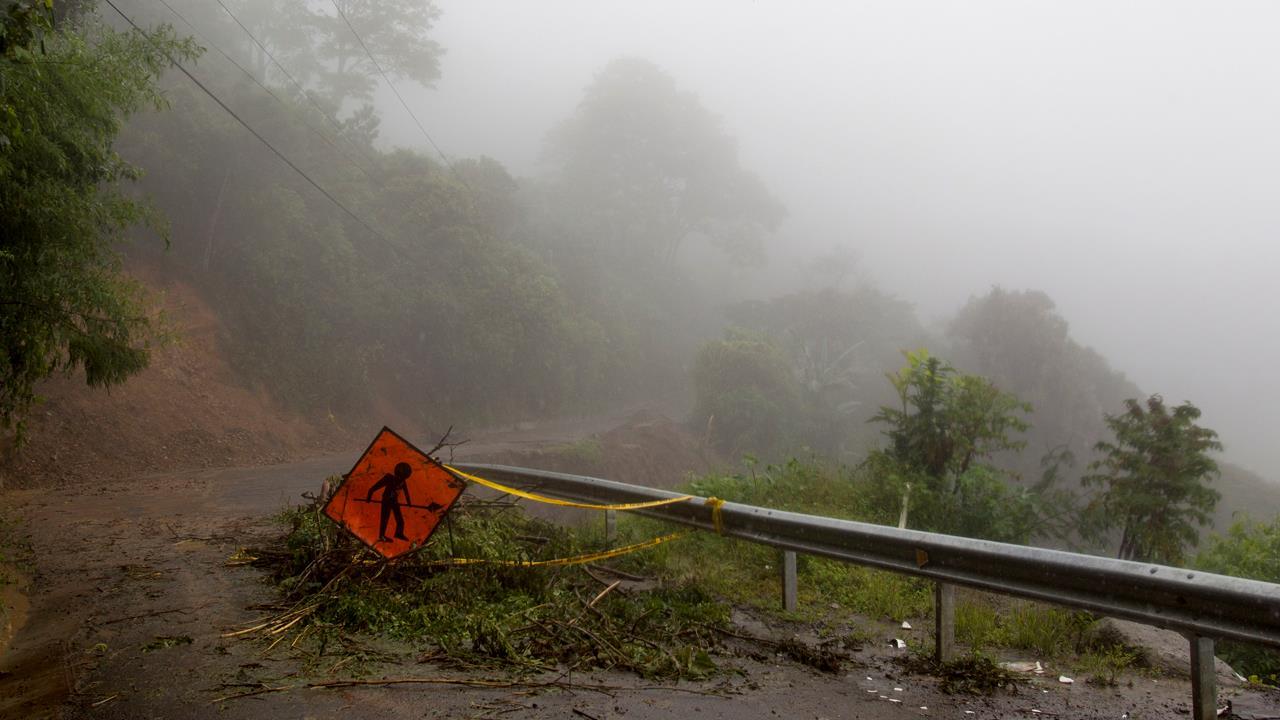Most U.S. Gulf oil output offline ahead of Tropical Storm Nate
Nearly three-quarters of U.S. Gulf of Mexico oil production was offline on Friday ahead of Tropical Storm Nate, with Gulf Coast energy companies bracing for the second major storm in as many months to menace the region.
Nate was moving over Mexico's Yucatan Peninsula at about 21 miles per hour (34 kph) on Friday afternoon and is expected to strike the U.S. Gulf Coast late Saturday as a hurricane, according to the National Hurricane Center.
That path takes it right through the most-active oil-producing region of the Gulf, with myriad wells and platforms. Producers moved quickly to shut-in wells on Friday, evacuating 66 platforms and taking more than 1 million barrels of oil in daily production offline since Thursday, according to government data.
Nate has already pushed nearly three times as much Gulf crude production offline as Hurricane Harvey did in August. At its height, Harvey shut-in only about 25 percent of the region's oil production.
Nate is expected to cut U.S. exports of crude oil and boost refining margins given low stockpiles of gasoline and other refined products, Goldman Sachs said in a note to clients on Friday.
Oil prices dropped 2 percent on Friday - despite the storm - on concerns about global oversupply and profit taking.
ConocoPhillips on Friday said it began evacuating non-essential personnel from its Magnolia oil platform in the central Gulf of Mexico, joining six other producers that have withdrawn workers or curbed production.
Exxon Mobil Corp shut down all production at two subsea production systems on Friday afternoon and was beginning to evacuate staff from its Mobile Bay platform, the day after evacuating its Lena platform.
Chevron Corp shut down its 4,100-mile (6,598 km) pipeline subsidiary, saying it would not accept or deliver crude until after Nate subsided.
Matt Rogers, meteorologist at Commodity Weather Group, said the speed of the storm could leave it as a Category 1 hurricane with up to 80 mile per hour (129 kph) winds.
"In our view it is not going to be strong enough to do damage" to offshore production facilities, he said. "Usually when storms move this quickly they have troubles developing," he said.
In New Orleans the U.S. Coast Guard declared condition "X-Ray" at the port ahead of Nate, which means force winds are possible within 48 hours. Commercial vessels and large barges must report to the Coast Guard to decide whether to depart or remain.
Parts of the Mississippi River, which flows past New Orleans and is a major transit hub for oil and other commodities, have been closed to inbound deep draft vessels.
The region's oil refineries are still recovering from Harvey, which shut production at some plants for weeks. Producers also curtailed some production but quickly resumed output.
Royal Dutch Shell Plc decided against cutting operations at its 225,800 barrel-per-day (bpd) Norco, Louisiana, refinery, reversing an earlier decision to cut rates.
Shell did, though, close production at three oil-producing hubs in the eastern Gulf.
Phillips 66 was shutting down its 247,000 bpd Alliance, Louisiana, refinery as a precautionary measure. It is located 25 miles (40 km) south of New Orleans.
Commodity Weather forecast Nate to bring moderate rainfall when it makes landfall somewhere west of Mobile Bay, Alabama, and east of New Orleans, Louisiana. It expects between 4 inches and 6 inches (10-15 centimeters) of rain to fall in the path of the storm.
The U.S. Gulf of Mexico is home to about 17 percent of the nation's crude oil output and 5 percent of dry natural gas output, according to the U.S. Energy Information Administration. More than 45 percent of the nation’s oil refining capacity is along the U.S. Gulf Coast.
(Reporting by Ernest Scheyder; Additional reporting by Marianna Parraga, Gary McWilliams and Erwin Seba; Editing by Marguerita Choy)




















